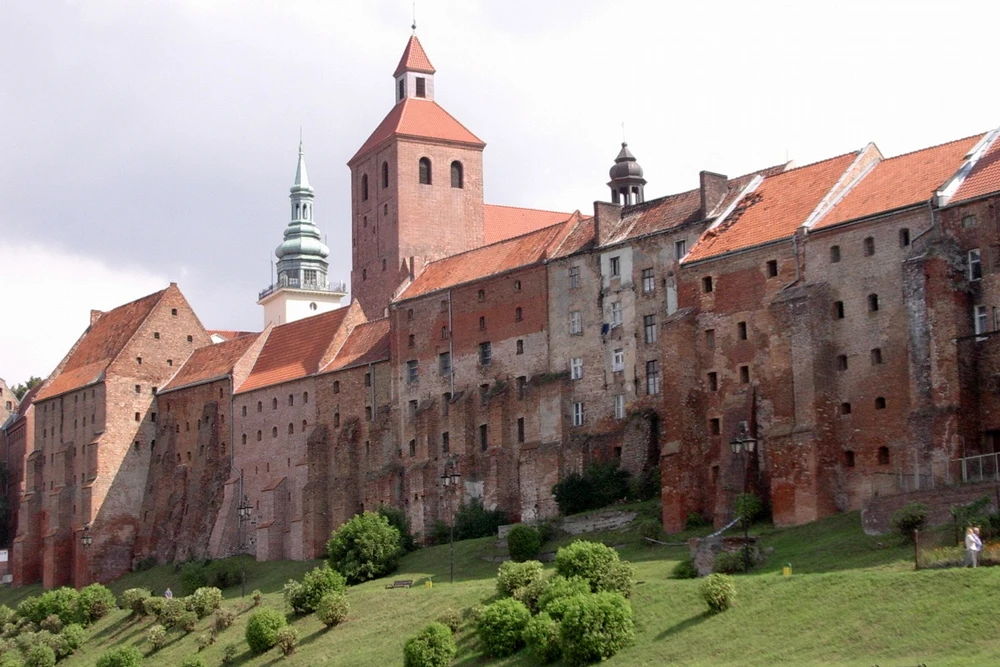Piotr z Grudziądza/Petrus Wilhelmi de Grudencz kdysi a nyní
V roce 2017 se na mapě polského města Grudziądz objevil nový název – alej Piotra z Grudziądza. Nachází se v jeho nejmalebnějším místě, probíhá podél Visly u paty gotických sýpek, jejichž cihlové stěny se tyčí nad nábřežím. Za letních večerů, kdy zapadající slunce ozařuje červeň těchto nezvyklých staveb, se po ní procházejí obyvatelé města i občasní turisté. Je to pouze vycházková alej, na které nenajdeme žádné adresy, ale právě tady si můžeme nejlépe představit, jak mohl vypadat Grudziądz v pozdním středověku.
[block background=“#e5e5e5″]For English version of the article please see below.[/block]
Newtonovo jablko a mazurkové rytmy
Někdy se sám sebe ptám, co by tomu řekl muzikolog Jaromír Černý, který nás opustil před sedmi lety. To on ohlásil v roce 1975 objev Piotra z Grudziądza, do té doby neznámého skladatele a latinského básníka. Když se Černý zabýval motety v českých rukopisech 15. a 16. století, všiml si, že z nich lze vyčlenit skupinu skladeb s charakteristickými rysy, v jejichž textech nalezneme akrostich tvořící jméno Petrus. Roli Newtonova jablka zde sehrálo čtyřhlasé moteto, kde má (dle pravidel tohoto hudebního druhu) každý hlas svůj vlastní text. Černý, trochu z nudy a trochu pro zábavu, začal číst první písmena po sobě následujících slov. A z této skládačky mu vyšlo:
První hlas: Pneuma eucaristiarum, terram rigans veniarum supernorum […] = PETRVS
Druhý hlas: Veni, vere illustrator, lux honoris, erogator luminis muniminis, iugum […] = VVILHELMI
Třetí hlas: Dator eia graciarum, rex virtutis, dux eorum numinum celestium, zeli […] – DE GRVDENCZ
Jaké bylo jeho překvapení, když po náročném bádání zjistil, že člověk stejného jména – tedy Petrus Wilhelmi de Grudencz – studoval v letech 1418–1430 na krakovské univerzitě. V jednom hudebním rukopise, který vznikl ve Vídni na konci 30. let 15. století, nalezl dokonce skladbu (Kyrie fons bonitatis) opatřenou jménem autora – „Mgr Petrus Wilhelmi”. Nebylo pochyb, že se jedná o stejnou osobu.
Černý informoval o svém výzkumu obsáhlou studií v časopise Hudební věda. Vypravil se také do polského města Bydgoszcz, kde se pravidelně konal kongres a hudební festival Musica Antiqua Europae Orientalis. Tehdy to bylo jediné místo ve „východním bloku”, kam jezdili badatelé z obou stran železné opony. A taktéž v roce 1975 došlo k prvnímu novodobému provedení hudby Piotra z Grudziądza.
Nadšení muzikologické obce bylo velké a „československý” hudební vědec se v Polsku stal slavným objevitelem. Pouze jedna skutečnost vrhala na nový objev jistý stín. Prameny jednoznačně dokazovaly, že celé jméno skladatele znělo „Petrus Wilhelmi de Grudencz”, tzn. Petr, syn Wilhelmův z Grudziądza. Těžko přehlédnout, že Wilhelm nebyl ani slovanský Stanislav, ani neutrální Mikuláš nebo Jan. To rozechvívalo citlivé struny vnímání polské historie a neodpovídalo oficiální ideologii Polské lidové republiky. V Petrově době ležel Grudziądz na území státu Řádu Německých rytířů (křižáků), se kterým mělo Polské království neustálé politické i vojenské konflikty. Křižáci byli v polské literatuře a umění až mytologicky zobrazování jako záporní hrdinové: němečtí agresoři napadající Polsko, zbavující ji země, komodit a cti. Přestože Grudziądz náležel do oblasti Chełmna, která ležela blízko hranic s Polskem a byla osídlena obyvatelstvem sympatizujícím s královstvím, obyvatelstvu tamních měst dominovali německy mluvící osadníci. A jejich potomkem musel být také Petrus.
Pravda, Grudziądz (německy Graudenz) byl po několik staletí součástí Polska, rovněž v období před 2. světovou válkou, ovšem německé obyvatelstvo v něm mělo významný percentuální podíl. V roce 1975 stále ještě nebyly zahojeny válečné rány a nepanovala přílišná ochota přiznávat německou historii takových míst, která před třiceti lety prošla rychlou a často bolestnou polonizací. Wilhelm se nehodil do dobové narace a místním stranickým orgánům se nelíbilo propagovat tvorbu jakéhosi autora pochybné národnosti. Petra ale zachránil jeden detail, o kterém Černý mluvil ve svém referátu v Bydgszczi. V Petrových písních se objevuje modální rytmus (vycházející z antických metrických stop), který někdy trochu připomíná rytmiku polských mazurkových tanců. Na Wilhelma se zapomnělo, od té doby se stal Petrus „pouze” Piotrem z Grudziądza a jeho hudba (takto chápána) svébytně předznamenávala polskou národní hudbu. O koncertu konaném v roce 1975 v rámci konference a festivalu Musica Antiqua Europae Orientalis napsal recenzent čtrnáctideníku „Ruch Muzyczny”:
„Program byl změněn a provedeny pouze dvě krátké mistrovy [Petrovy] skladby. Je dobře, že vůbec byly provedeny, neboť se objevily hlasy, že by se mělo počkat s publicitou, dokud se dostatečně nevyjasní, zda se opravdu jedná o polského skladatele […]. Ze dvou skladeb provedených v Grudziądzi byla jedna (Kyrie fons bonitatis) zkomponována v burgundském stylu, druhá, provedená instrumentálně (Praesulis eminenciam), měla taneční charakter v očividně polském rytmu.”
Není třeba dodávat, že hledání mazurkových rytmů u Petra Wilhelmi je anachronické: modální rytmika jeho skladeb vycházela z univerzálních evropských, nikoli polských základů.
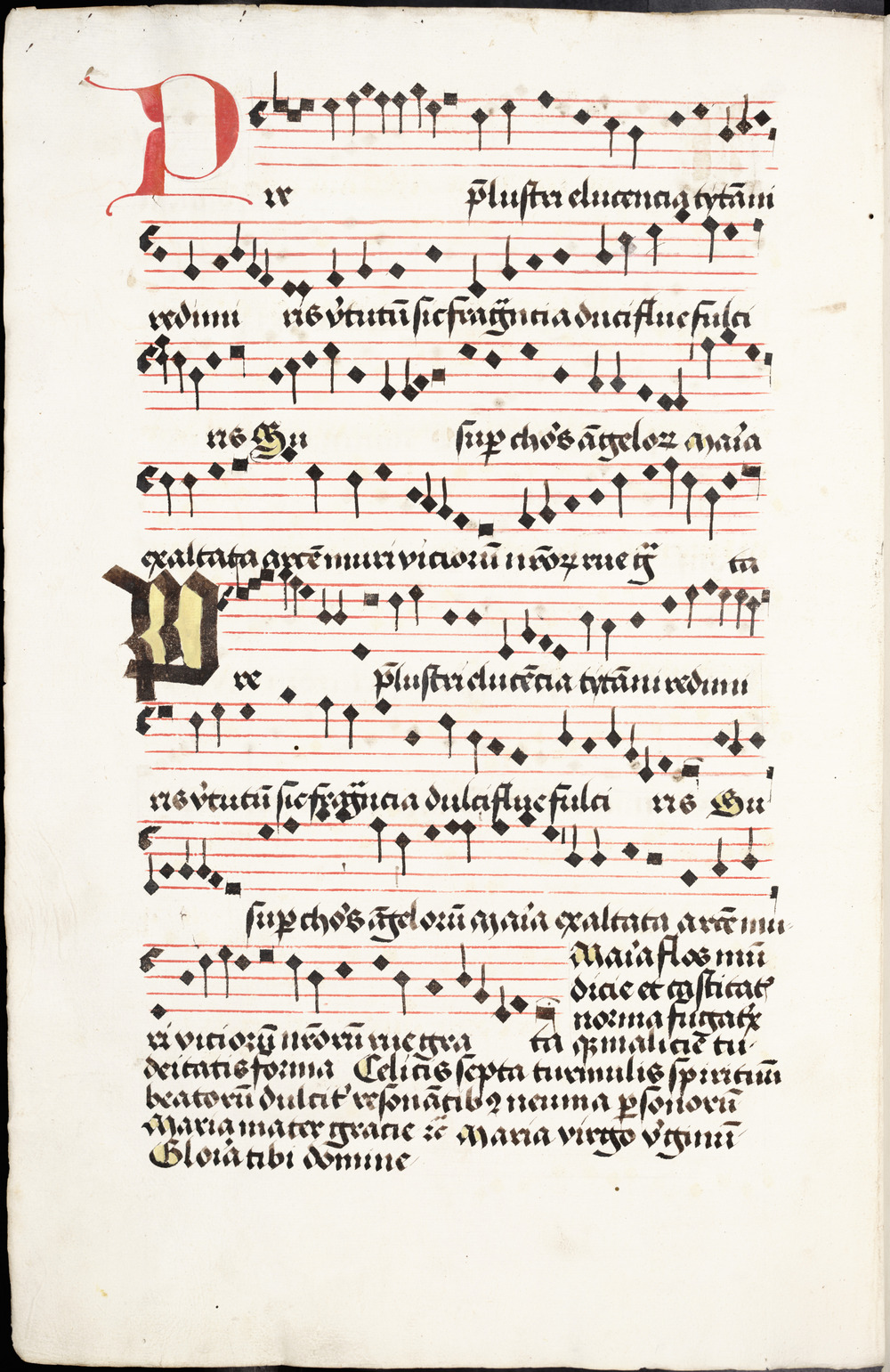
Z Grudziądza až do Číny
Objev Jaromíra Černého žil v Polsku i v Čechách svým vlastním životem a příliš nedbal na práci muzikologů a hudebníků z jiných částí Evropy. Postupně se jak k životopisu, tak Petrově tvorbě začala přidávat nová fakta a postřehy. Velké zásluhy o to měli v osmdesátých letech badatelé jako Tom Ward (USA), Ian Rumbold (Velká Británie) a Mirosław Perz (Polsko). V roce 1993 po mnoha letech očekávání vyšla v nakladatelství Polskie Wydawnictwo Muzyczne v Krakově edice souborného díla Piotra z Grudziądza připravená samozřejmě Jaromírem Černým. Významné bylo to, že se na obálce objevila plná latinská forma skladatelova jména (včetně „Wilhelmi”), a zároveň na zdůraznění jeho vazeb k Polsku a Krakovu ještě rozšířena o upřesnění: „Magister Cracoviensis”. V předmluvě k tomuto vydání (datované rokem 1982) napsal Mirosław Perz: „Osobnost a tvorba Petra z Grudziądze je tedy velmi důležitým prvkem poznání společného hudebního odkazu Polska, Německa a Čech, článkem řetězu spojujícím jejich kulturu 15. století v celek.”
Perz se distancoval od nahlížení na Piotra z Grudziądza výlučně v kontextu polského národního dědictví, naopak, nasměroval uvažování o něm k několika zemím střední Evropy. Od 90. let 20. století tak skokem přetvořil polského skladatele na skladatele středoevropského.
Tehdy se také rozběhla vlna nového výzkumu a objevů. Zjistilo se mimo jiné, že se Petr narodil roku 1392, byl kaplanem římského krále a pozdějšího císaře Friedricha III. (německý muzikolog Martin Staehelin). Byla reflektována rozsáhlá recepce Petrovy tvorby v 16. století, také užití melodie kánonu Presulem ephebeatum ve mši Heinricha Isaaca (český muzikolog Martin Horyna) a ve Slezsku (Staehelin) a v Sasku (Ward) byly objeveny nové prameny s jeho tvorbou. Počet známých skladeb stoupl z 23 na 40, počet pramenů s Petrovou tvorbou z 38 na 50 (stav z roku 2018). Roku 1991, ještě před vydáním notové edice, vyšla u firmy Accord první nahrávka Petrových skladeb v podání polských souborů Bornus Consort a Ars Nova. Posléze se objevily další – jeho skladby zařadily do svého repertoáru soubory Ars cameralis (ČR), Hilliard Ensemble (Velká Británie), Schola Gregoriana Pragensis (ČR), Ars cantus (Polsko), Stimmwerck (Německo), Vox Clamantis (Estonsko), a v poslední době např. La Morra (Švýcarsko). Petrovy skladby nadšeně zpívají také amatérské soubory a jeho hudba zní na koncertech nejen v Evropě, ale také ve Spojených státech nebo v Číně.
Fenomén Petrus
Když přes internet poslouchám provedení písně Plaude euge theotocos třemi americkými amatéry oblečenými do pseudorenesančních kostýmů nebo tutéž píseň zpívanou na gruzínský způsob zpěvákem Soso Kopaleshvilim na nejnovějším albu souboru Jerycho (Polsko), sám sebe se ptám: čím hudba Petra Wilhelmi přitahuje tak rozdílné interprety? V čem spočívá fenomén, který se těší rostoucímu zájmu muzikologů i posluchačů?
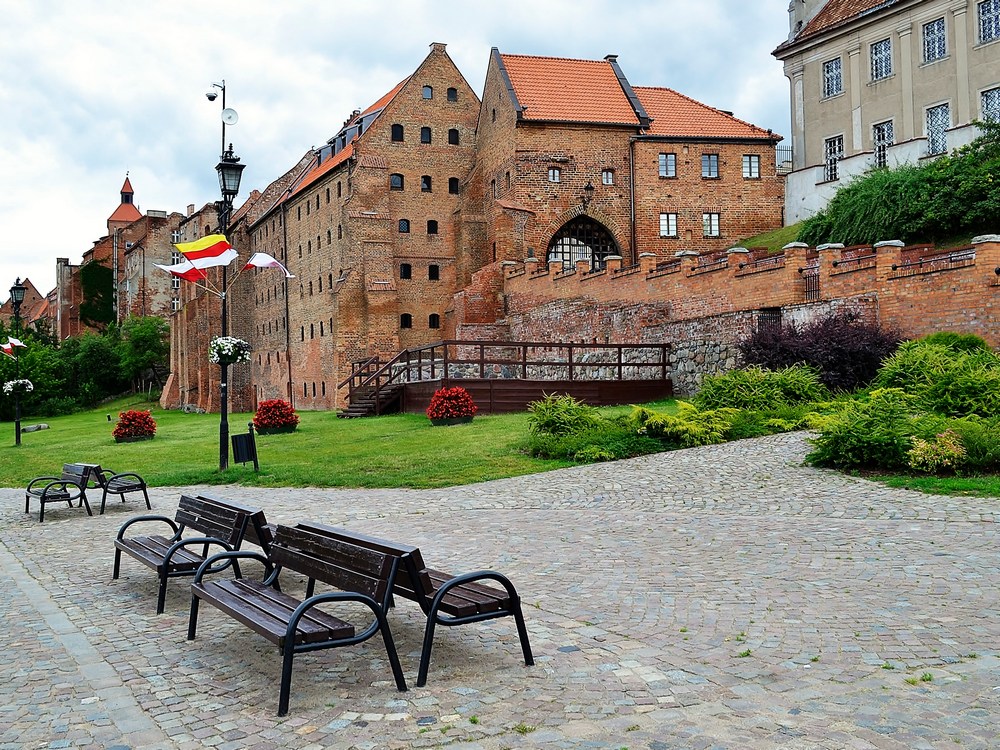 Piotr z Grudziądza nebyl profesionálním hudebníkem, nebyl členem žádného hudebního souboru (tzv. kapely) a komponování nebylo jeho hlavní činností. Spíše se věnoval duchovní dráze (o čemž svědčí jeho postavení na dvoře Friedricha III.), mohl plnit diplomatické úkoly a také, jako mnoho tehdejších magistrů, vyučovat. Když analyzujeme dochované prameny s jeho tvorbou, docházíme k poznatku, že byla oblíbena v univerzitním prostředí, ve školách a klášterech. V polovině 15. století se stala součástí hudebního repertoáru českých utrakvistů, kteří opisovali jeho skladby až do počátku 17. století. Takový okruh uživatelů náležející k nižším a středním společenským vrstvám, určitě souvisí i s charakteristickými rysy této tvorby. Petrus skládal především písně, o něco sofistikovanější moteta a brilantní kánony. Nebyly to skladby, které by mohly znít při oficiálních slavnostech v královských kaplích nebo katedrálách, mimo jiné proto, že nezhudebňovaly liturgické texty. Mají daleko do komplikovanosti a rafinovanosti, které jsou přítomné ve skladbách jeho současníků, např. Guillauma Du Fay. Byly to spíše skladby sloužící k rozjímání nebo ušlechtilé zábavě, které umožňovaly příjemné muzicírování, zaujaly pěknými melodiemi a skrytými intelektuálními hříčkami. Není proto divu, že píseň Plaude euge theotocos přitáhla pozornost uvedených interpretů. Naříkající melodie a jednoduchá konstrukce tenoru, tj. spojení přirozené invence a bezprostřednosti často nachází odezvu u hudebníků i posluchačů.
Piotr z Grudziądza nebyl profesionálním hudebníkem, nebyl členem žádného hudebního souboru (tzv. kapely) a komponování nebylo jeho hlavní činností. Spíše se věnoval duchovní dráze (o čemž svědčí jeho postavení na dvoře Friedricha III.), mohl plnit diplomatické úkoly a také, jako mnoho tehdejších magistrů, vyučovat. Když analyzujeme dochované prameny s jeho tvorbou, docházíme k poznatku, že byla oblíbena v univerzitním prostředí, ve školách a klášterech. V polovině 15. století se stala součástí hudebního repertoáru českých utrakvistů, kteří opisovali jeho skladby až do počátku 17. století. Takový okruh uživatelů náležející k nižším a středním společenským vrstvám, určitě souvisí i s charakteristickými rysy této tvorby. Petrus skládal především písně, o něco sofistikovanější moteta a brilantní kánony. Nebyly to skladby, které by mohly znít při oficiálních slavnostech v královských kaplích nebo katedrálách, mimo jiné proto, že nezhudebňovaly liturgické texty. Mají daleko do komplikovanosti a rafinovanosti, které jsou přítomné ve skladbách jeho současníků, např. Guillauma Du Fay. Byly to spíše skladby sloužící k rozjímání nebo ušlechtilé zábavě, které umožňovaly příjemné muzicírování, zaujaly pěknými melodiemi a skrytými intelektuálními hříčkami. Není proto divu, že píseň Plaude euge theotocos přitáhla pozornost uvedených interpretů. Naříkající melodie a jednoduchá konstrukce tenoru, tj. spojení přirozené invence a bezprostřednosti často nachází odezvu u hudebníků i posluchačů.
Tím, co může fascinovat badatele v oblasti kultury a historie, je nesoulad mezi zjevem Piotra z Grudziądza a obvyklými schématy hudební historiografie. Je to skladatel, kterého je těžké zařadit. Zmiňoval jsem již problémy s jeho národní příslušností, ale skladatel nezapadá ani do (západo) evropské historiografie: kritéria formulovaná vzhledem k burgundské nebo italské hudbě 15. století jsou v jeho případě zavádějící. Narušuje existující a po desetiletí utužovaná myšlenková schémata o hudbě pozdního středověku. Jediným klíčem k pochopení fenoménu Piotra z Grudziądza je koncept střední Evropy, neboť pouze tam – v Čechách, Polsku, Uhrách, Rakousku, Bavorsku a Sasku – můžeme nalézt jevy, které objasňují genezi a kulturní význam jeho tvorby.
Petrus a hudební paměť
Piotr z Grudziądza se nyní stal jedním z předmětů zájmu mezinárodní výzkumné skupiny HERA, protože je výbornou ukázkou problému fungování hudební minulosti v pozdním středověku a raném novověku. Příkladem mohou být Petrova moteta – skladby pro tři až pět hlasů, kde každý zpívá jiný text. Tento speciální druh – z našeho pohledu dost zvláštní, neboť prakticky znemožňuje porozumění obsahu skladby – měl velmi dlouhou genezi. Vznikl ve 13. století ve Francii v historickém období nazývaném ars antiqua.
V 1. polovině 15. století se bylo možno ve střední Evropě (např. v německých oblastech, Rakousku a Čechách) setkat se dvěma tradicemi vícetextového moteta. První z nich vycházela z francouzských vzorů, ale ne těch ze 13. století, nýbrž z následujícího období zvaného ars nova. S motety tohoto typu je možno se setkat v rukopisech s vědomím, že byla tu a tam provozována, v 15. století bylo možno se o nich dozvědět z teoretických traktátů, které vykládaly zásady menzurální hudby. Vedle toho se vytvořila ještě druhá tradice. Známe ji nejprve z rukopisů z německojazyčných oblastí druhé poloviny 14. století a potom ještě z početných pramenů středoevropských (mezi nimi i českých) z 15. století. Byla to jednodušší moteta, ve kterých, na rozdíl od motet ars nova, nebyla melodie tenoru převzata z gregoriánského chorálu, ale byla vytvořena autorem skladby. Z mnoha důvodů mohla připomínat písně, ovšem zachovávala si nejdůležitější rys moteta – vícetextovost. S ohledem na oblast pěstování těchto skladeb je možné je nazvat středoevropskými motety.
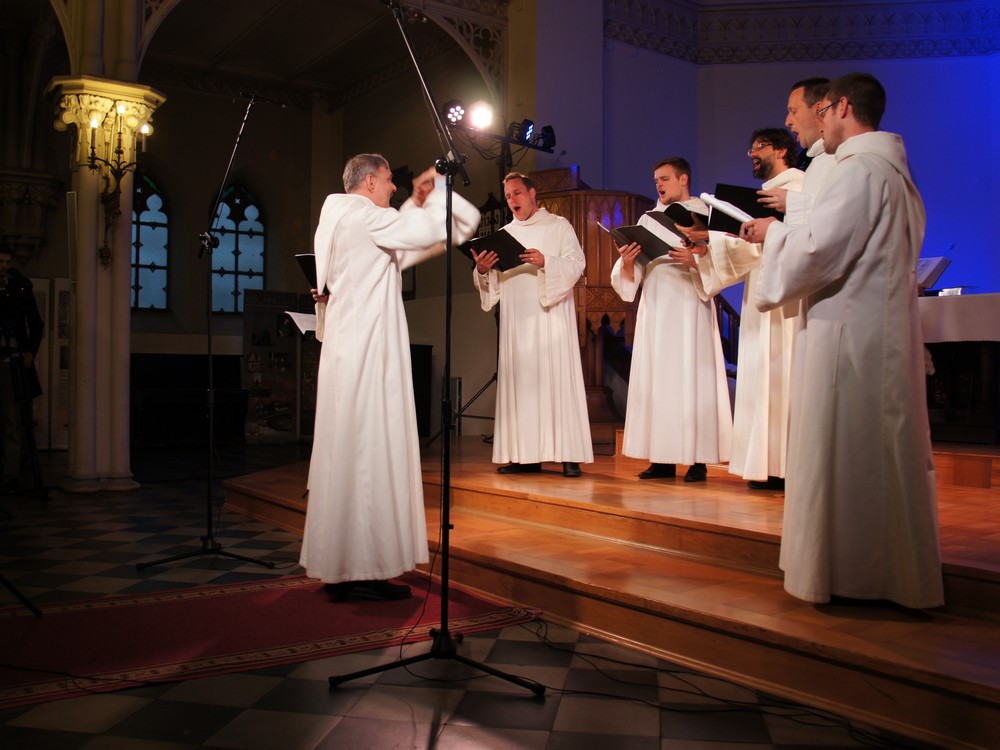 Jak si můžeme domyslet, Petrova moteta náleží k druhé tradici. V období proměn hudebního stylu ve druhé třetině 15. století stále trvala a dále se rozvíjela. Ve srovnání s hudbou komponovanou v západní Evropě se zdála být archaickou, nicméně byla pěstována také v pozdější době, ještě i po celé 16. století. A to se týkalo také skladeb Petra Wilhelmi.
Jak si můžeme domyslet, Petrova moteta náleží k druhé tradici. V období proměn hudebního stylu ve druhé třetině 15. století stále trvala a dále se rozvíjela. Ve srovnání s hudbou komponovanou v západní Evropě se zdála být archaickou, nicméně byla pěstována také v pozdější době, ještě i po celé 16. století. A to se týkalo také skladeb Petra Wilhelmi.
Petrus navazoval na minulost zcela vědomým způsobem. V motetu Pneuma eucaristiarum (do kterého zakódoval celé své jméno) jednoznačně odkazuje na moteto ke svátku Seslání Ducha svatého Veni sancte spiritus, které vzniklo koncem 14. století a bylo známo až do poloviny století šestnáctého. Připouští se, že Petrova náležitost k uvedené hudební tradici nebyla motivována pouze čistě hudebními nebo praktickými důvody. Bylo součástí skladatelovy identity. To může dokládat moteto Probitate eminentem / Ploditando exarare, které sleduje hlavní rysy tradice moteta období ars nova, ovšem ve formě parodie. Skladba se tváří jako vážná a její text má oslavný charakter, ve skutečnosti se jedná o hudební žert a satiru na život duchovních. V obou těchto motetech je patrné, jak se Petrova poetická a hudební tvorba splétá do integrálního a originálního celku.
Epilog
V roce 2015 vznikl v Grudziądzi Festival staré hudby, který nese jméno našeho hrdiny. Během festivalu se konají nejen koncerty, ale také různé vzdělávací akce. Díky projektu HERA proběhly v roce 2018 dva koncerty: Schola Gregoriana Pragensis pod vedením Davida Ebena provedla mj. píseň Poligena examines nedávno objevenou Janem Ciglbauerem a autorem těchto řádek, zatímco varšavský soubor improvizované hudby Bastarda představil skladby pro klarinet, kontrabasový klarinet a violoncello, které vycházejí z tvorby patrona festivalu. Povinným bodem návštěvy obou dvou souborů v Grudziądzi byla procházka alejí Piotra z Grudziądza ve světle zapadajícího slunce.
Přeložila Lenka Hlávková
[block background=“#e5e5e5″]Tento seriál vzniká v rámci evropského projektu HERA Sound Memories: The Musical Past in Late-Medieval and Early-Modern Europe, který řeší mezinárodní tým muzikologů pod vedením Prof. Karla Kügleho (Utrecht) v pěti akademických institucích (Univerzita Utrecht, Univerzita Cambridge, Univerzita Curych, Univerzita Karlova Praha, Polská akademie věd Varšava).
Paweł Gancarczyk je profesorem muzikologie v Ústavu umění Polské akademie věd ve Varšavě. Věnuje se otázkám hudební kultury střední Evropy v období pozdního středověku a hudebnímu tisku 16. století.
Více informací (včetně audio- a videozáznamů) najdete na webových stránkách projektu Sound Memories.[/block]
Vážení čtenáři, vzhledem k mezinárodnímu složení badatelského týmu mimořádně uveřejňujeme českou i anglickou variantu textu.
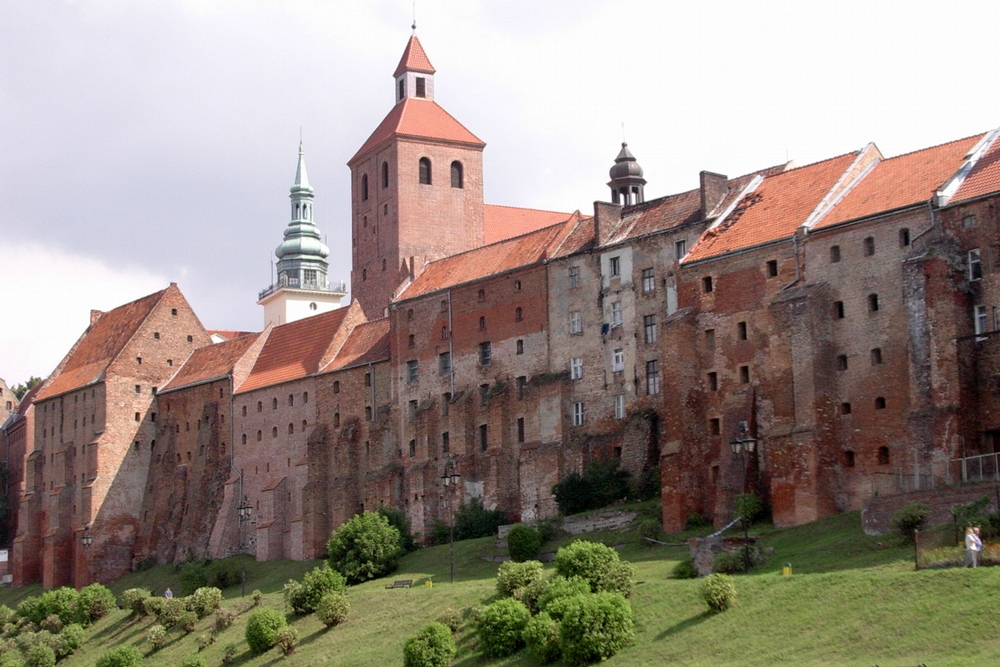
Memory and Tradition within the European Music Culture of the Late Middle Ages and the Early Modern Times
Petrus Wilhelmi past and present
In 2017 a new street name appeared on the map of Grudziądz: Aleja Piotra z Grudziądza (Peter of Grudziądz Alley). It is situated in the most emblematic part of the city, running parallel to the Vistula at the foot of the Gothic granaries, the monumental brick walls of which rise above the riverbank. On summer evenings, when the setting sun illuminates the red walls of these remarkable buildings, local residents and occasional tourists walk along this alley. Although merely a promenade, it is the best place to imagine how Grudziądz may have looked during the Middle Ages.
Newton’s apple and mazurka rhythms
I sometimes wonder what Jaromír Černý would have said about it all – that distinguished musicologist who died seven years ago. It was he who, in 1975, announced the discovery of Petrus Wilhelmi de Grudencz, a previously unknown composer and Latin poet. At that time, Černý was exploring motets in Bohemian manuscripts of the fifteenth and sixteenth centuries. He noticed that it was possible to distinguish among them a group of compositions displaying certain individual features, the texts of which contained an acrostic forming the name Petrus. The Newton’s apple turned out to be a four-part motet in which – in accordance with the features of that genre – each of the parts has different words. Černý, a little out of boredom, a little bit for fun, began to read the first letters of the words. Here is what came out of that puzzle:
First part: Pneuma eucaristiarum, terram rigans veniarum supernorum […] = PETRVS
Second part: Veni, vere illustrator, lux honoris, erogator luminis muniminis, iugum […] = VVILHELMI
Third part: Dator eia graciarum, rex virtutis, dux eorum numinum celestium, zeli […] – DE GRVDENCZ
Imagine his surprise when painstaking research led to the discovery that a person with the same name – Petrus Wilhelmi de Grudencz – studied at the university in Kraków from 1418 to 1430. And in one music manuscript – produced in Vienna towards the end of the 1430s – he found a work (Kyrie fons bonitatis) above which was written the composer’s name – ‘Mgr Petrus Wilhelmi’. There was no doubt that it was one and the same person.
Černý reported on his research in a lengthy article published in the quarterly Hudební věda. He also travelled to Poland, to Bydgoszcz (not far from Grudziądz), where the cyclical music congresses and festivals Musica Antiqua Europae Orientalis were held. At the time, this was the only place in the Eastern Bloc where one could meet early music scholars from both sides of the Iron Curtain. That year 1975 was also when the music of Petrus Wilhelmi was first performed.
There was great enthusiasm in the music environment, and the ‘Czechoslovakian’ musicologist was hailed in Poland for his discovery. Yet there was a fly in the ointment. The sources clearly indicated that the composer’s full name was ‘Petrus Wilhelmi de Grudencz’, which literally translates as Peter, son of Wilhelm, from Grudziądz. That Wilhelm was obviously no Slavic Stanislav or a more neutral Nicholas or John. That struck a nerve with regard to Polish history and undermined the official ideology of the People’s Republic of Poland. In Peter’s time, Grudziądz belonged to the Teutonic State, with which the Kingdom of Poland was in a state of permanent political and military conflict. The Teutonic Knights are anti-heroes mythologised by Polish literature and art: German slaughterers who invaded Poland and stripped it of land, possessions and honour. Although Grudziądz belonged to Culmland (centred on the city of Chełmno), which lay close to the Polish border, with a large percentage of the population displaying decidedly pro-Polish sympathies, it was the German language that dominated among the inhabitants of the towns in that region. Petrus Wilhelmi must have been a descendant of such settlers.
Although Grudziądz (Ger. Graudenz) belonged to Poland for several centuries, including during the period leading up to the Second World War, the German element always represented a considerable percentage of the population. In 1975 the wounds of war were not yet healed, and the Poles were very reluctant to evoke the German past of towns and cities which thirty years earlier had undergone a rapid and not infrequently painful re-Polonisation. Petrus Wilhelmi did not suit the binding narrative of the day, and the local authorities were not in favour of propagating the work of a composer of dubious nationality. Yet the composer was saved by one detail, which Černý mentioned in the paper he delivered in Bydgoszcz. His songs feature a modal rhythm (based on ancient metrical feet) which sometimes resembles the rhythm of the Polish mazurka. If it was a mazurka, then Petrus must have been a Pole. Wilhelm was forgotten, and henceforth Petrus became ‘only’ Piotr z Grudziądza (Peter of Grudziądz), and his music a prefiguration of Polish national music. Here is what the reviewer of the biweekly Ruch Muzyczny wrote about a concert given as part of Musica Antiqua Europae Orientalis in 1975:
The programme was altered, and only two short compositions by the master [Petrus] were performed. It is good that he was performed at all, as there were apparently suggestions that the event be put off until it was ascertained once and for all that this was definitely a Polish composer […]. Of the two works performed in Grudziądz, one (Kyrie fons bonitatis) was in the Burgundian style and the other, performed instrumentally (Praesulis eminenciam), possessed dance-like features, in a strikingly Polish rhythm. [1]
There is surely no need to add that the search for mazurkas in Piotr’s output is an anachronism: the modal rhythms of his works resulted from universal, European, rather than specifically Polish, principles.

From Grudziądz to China
For many years, Černý’s discovery lived a life of its own in Poland and the Czech Republic, without attracting too much attention among scholars and musicians from other parts of Europe. Gradually, however, new facts and observations began to be added to Petrus Wilhelmi’s biography and oeuvre. Considerable contributions were made in this respect during the eighties by such scholars as Tom Ward (US), Ian Rumbold (UK) and Mirosław Perz (PL). In 1993, after many years’ wait, an edition of the complete works of Petrus Wilhelmi was published by PWM Edition of Kraków, prepared, of course, by Jaromír Černý. Significantly, while the composer’s full Latin name was given on the cover (including ‘Wilhelmi’), it was expanded to include the specification ‘Magister Cracoviensis’, to emphasise his links with Poland and Kraków. In his foreword to that edition (dated 1982), Mirosław Perz wrote:
So the figure and work of Peter of Grudziądz constitute a very important element in our knowledge of the shared musical heritage of Poland, Germany and Czech lands – a link that binds their fifteenth-century culture into one […]. [2]
So Perz distanced himself from attempts to consider Petrus Wilhelmi exclusively within the context of Polish national heritage, steering reflection on him towards the heritage of several countries of Central Europe. Since the nineties, Petrus has gradually turned from a Polish composer into a Central European composer.
That period also brought an avalanche of new research and discoveries. It was established, among other things, that Petrus Wilhelmi was born in 1392 and was a chaplain to the German king and later emperor Frederick III (Martin Staehelin). The extensive reception of his output during the sixteenth century was noted, including the use of the melody of his canon Presulem ephebeatum in a mass by Heinrich Isaac (Martin Horyna). New sources of his work were found in Silesia (Staehelin) and in Saxony (Ward). The number of known compositions grew from 23 to 40, whilst the number of sources including his works rose from 38 to more than 50 (in 2018). In 1991 – still before the edition was published – the first recording of Petrus Wilhelmi’s music was released, prepared by the Polish ensembles Bornus Consort and Ars Nova for the Accord label. Further recordings were made, with his works added to the repertoire of Ars cameralis (CZ), the Hilliard Ensemble (GB), Schola Gregoriana Pragensis (CZ), Ars cantus (PL), Stimmwerck (D) and Vox Clamantis (EST), and in more recent times such ensembles as La Morra (CH). Petrus Wilhelmi’s works are readily sung by amateur groups, and his music can be heard in concerts not just in Europe, but also in the US and China.
The phenomenon of Petrus Wilhelmi
When I listen online to a performance of the song Plaude euge theotocos by three American amateurs dressed in quasi-Renaissance costumes or to the same song performed in Georgian style by Soso Kopaleshvili on the latest release by Jerycho (PL), I ask myself what appeals to such diverse performers in the music of Petrus. How can one account for the fact that he also enjoys growing interest among musicologists and audiences?

Petrus Wilhelmi was not a professional musician; he did not belong to any music chapel, and composing was not his main occupation. He pursued more an ecclesiastic career (as his post at the court of Frederick III indicates), and he may also have provided some diplomatic services, and – like many graduates of those times – worked as a teacher. Analysing the extant sources of his output, we find that it attracted interest in university, school and monastic environments. In the mid fifteenth century, it entered the repertoire of the Bohemian Utraquists, who copied Petrus Wilhelmi’s works up to the beginning of the seventeenth century. That circle of performers of his music – belonging to lower and middle social strata – was linked of course to the features of his works. Petrus composed primarily songs, slightly more elaborate motets and brilliant canons. Those were not works that could have been played during official ceremonies in royal chapels or cathedrals, partly due to the lack of a liturgical text. They were far from the complexity and refinement that we find in the works of such contemporaries as Guillaume Du Fay. They were rather works serving devotion and enlightened amusement, providing pleasure in music-making and riveting listeners’ attention with their beautiful melodies and hidden intellectual ‘games’. It is hardly surprising that the song Plaude euge theotocos attracted the attention of such performers. A work with a charming melody and simple design, combining natural invention with a lack of pretentiousness, often finds recognition among musicians and listeners.
One aspect that may fascinate culture and history scholars is the incongruence of the phenomenon of Petrus Wilhelmi in relation to the established patterns of music historiography. As a composer, he is difficult to classify. I have already mentioned the problems related to his nationality. He also does not fit (Western) European historiography: in his case, the criteria elaborated in relation to the Burgundian or Italian music of the fifteenth century do not apply. He confounds the patterns of thinking about late medieval music that have held sway for decades. The only key to understanding the phenomenon of Petrus Wilhelmi is the concept of Central Europe, because only there – in Bohemia, Poland, Hungary, Austria, Bavaria and Saxony – can we find phenomena that shed light on the origins and cultural significance of his output.
Petrus Wilhelmi and sound memories
Petrus is currently an object of interest for the international research group HERA. That is because he perfectly exemplifies the functioning of the musical past during the late Middle Ages and the early modern era. Take for instance his motets – works scored for three to five parts, where each of the parts sings a different text. This peculiar genre – rather surprising from our point of view, as the polytextuality makes it practically impossible to understand the words – had very old origins. It arose during the thirteenth century in France, during the period in music history known as ars antiqua.
During the first half of the fifteenth century in Central Europe – German lands, Austria and Bohemia, for example – one could encounter two traditions of polytextual motet. The first of them stretched back to French models – not from the thirteenth century, but from the next period in music history, known as ars nova. Motets of this type can be found in manuscripts, and they are known to have been performed here and there. During the fifteenth century, they were described in theoretical treatises in which the principles of mensural music were expounded. There also developed a second tradition, familiar thanks to manuscripts from German-language territory dating from the second half of the fourteenth century and then from numerous Central European (including Bohemian) sources from the fifteenth century. These were simpler motets in which – unlike ars nova motets – the tenor melody was not taken from Gregorian chant, but was devised by the composer. In many respects, they could have resembled songs, yet they retained the most important feature of the motet, namely, polytextuality. Given the geographical area over which these works were cultivated, they may be called Central European motets.

As one may surmise, Petrus Wilhelmi’s motets belong to the latter tradition. During the middle decades of the fifteenth century, a time of change in music, this tradition survived and continued to develop. Compared to the music being written in Western Europe, it seemed archaic, but it was also cultivated in later times, even throughout the sixteenth century. This also applied to the works of Petrus Wilhelmi de Grudencz.
Petrus referred to the past deliberately. This is clear in his motet Pneuma eucaristiarum (the work in which he encoded his whole name), referring unequivocally to another motet for the feast of Pentecost – Veni sancte spiritus, which was written towards the end of the fourteenth century and was still familiar up to the mid sixteenth century. It is assumed that Wilhelmi’s choice of this specific musical tradition was prompted not only by purely musical or practical considerations. It also attested to the composer’s identification. This may be gauged from the motet Probitate eminentem / Ploditando exarare, which imitates features of the foreign tradition of the ars nova motet, but this imitation has a parodistic dimension. This work ‘pretends’ to have a serious character and panegyric content, while it is actually a musical joke, a satire on the life of clerics. In both these motets, we can see how Piotr’s poetical and musical output forms an integral and original whole.
Epilogue
In 2015 the Petrus Wilhelmi Festival of Early Music was founded in Grudziądz. Besides concerts, the festival also features numerous educational events. In 2018 two concerts were given there thanks to the HERA project. Schola Gregoriana Pragensis, led by David Eben, performed a programme including Petrus Wilhelmi’s recently discovered – by Jan Ciglbauer and myself – song Poligena examines. The Bastarda improvised music ensemble of Warsaw, meanwhile, presented compositions for clarinet, contrabass clarinet and cello, taking as its starting point works by the festival’s patron. An essential part of the visit of both ensembles to Grudziądz was a walk along Peter of Grudziądz Alley in the light of the setting sun.
Translated by John Comber
[1] Tadeusz A. Zieliński, ‘Bydgoski festiwal – lokalny czy światowy?’ [The Bydgoszcz festival: local or global?], Ruch Muzyczny, 19/22 (1975), 12.
[2] Mirosław Perz, ‘Przedsłowie’ [Foreword], in Petrus Wilhelmi de Grudencz. Magister Cracoviensis. Opera omnia, ed. Jaromír Černý (Kraków, 1993), 4.
[block background=“#e5e5e5″]This series has been published as part of the European project HERA Sound Memories: The Musical Past in Late Medieval and Early Modern Europe, undertaken by an international team of musicologists led by Prof. Karl Kügle (Utrecht) in five academic institutions (Utrecht University, the University of Cambridge, the University of Zurich, the Charles University in Prague, and the Polish Academy of Sciences in Warsaw).
Paweł Gancarczyk is a professor of musicology in the Institute of Art at the Polish Academy of Sciences in Warsaw. In his research he focuses on the musical culture of Central Europe in the late Middle Ages and musical printing of the fifteenth century.
More information (including audio and video recordings) see on Sound Memories project website.[/block]
This project has received funding from the H2020-EU.3.6 – SOCIETAL CHALLENGES – Europe in a Changing World – Inclusive, Innovative and Reflective Societies under grant agreement no. 649307. The project Sound Memories: The Musical Past in Late-Medieval and Early-Modern Europe is financially supported by the HERA Joint Research Programme (www.heranet.info) which is co-funded by AHRC, AKA, PT-DLR, CAS, CNR, DASTI, ETAG, FCT, FNR, F.R.S.-FNRS, FWF, FWO, HAZU, IRC, LMT, MIZS, MINECO, NCN, NOW, RANNÍS, RCN, SNF, VIAA, VR and The European Community, SOCIETAL CHALLENGES – Europe in a Changing World – Inclusive, Innovative and Reflective Societies under grant agreement no. 649307.
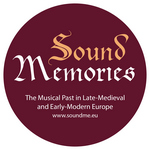 |
 |
 |
